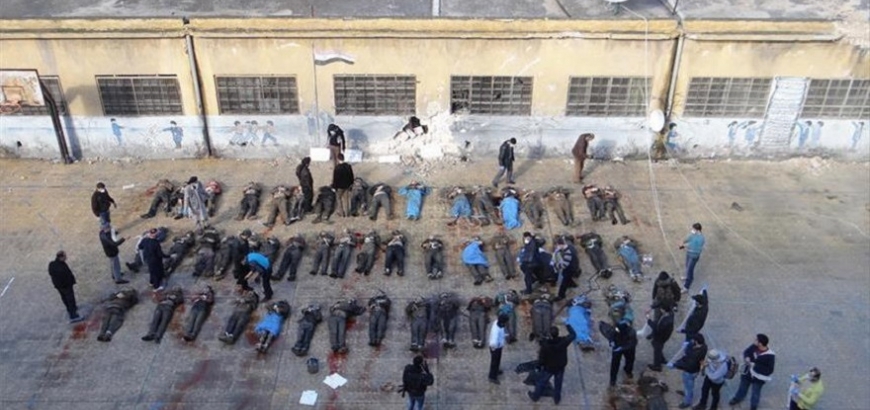On Monday, the Syrian Network for Human Rights said that 13,983 people had died under torture in the Assad regime’s prisons since March 2011, indicating that about 128,000 of them were still under arrest.
This came in a report by the Network on the toll of the events in Syria since 2011. The report added that, “127,916 people are still under arrest or have been forcibly disappeared into the regime’s official and unofficial detention centers over the same period.”
The report said that, “regime forces have pursued a policy of imposing sieges on areas under the control of armed opposition groups, and have prevented the delivery of food and medicine, which has led to the deaths of 921 civilians, including 398 children and 187 women, since March 2011.”
According to the report, “216 chemical weapons attacks have been carried out by the regime in Syria since their first use in December 2012, killing no fewer than 1,461 people.”
According to the report, “Syria has seen huge waves of displacement, especially in 2017 and 2018, due to the military operations carried out by the parties to the conflict, or as a result of the truces and agreements imposed on the blockaded cities and towns, whose contents violate international humanitarian law.”
The Network added that, “about 14.2 million people have been forcibly displaced since March 2011, including 8 million people inside Syria and about 6.2 million people outside the country.”
Syria has witnessed a brutal war since 2011 by the Bashar al-Assad regime and allied militias backed by Iran and Russia, which has killed hundreds of thousands of Syrians, in addition to displacing millions from their cities and villages.
This article was translated and edited by The Syrian Observer. Responsibility for the information and views set out in this article lies entirely with the author.


